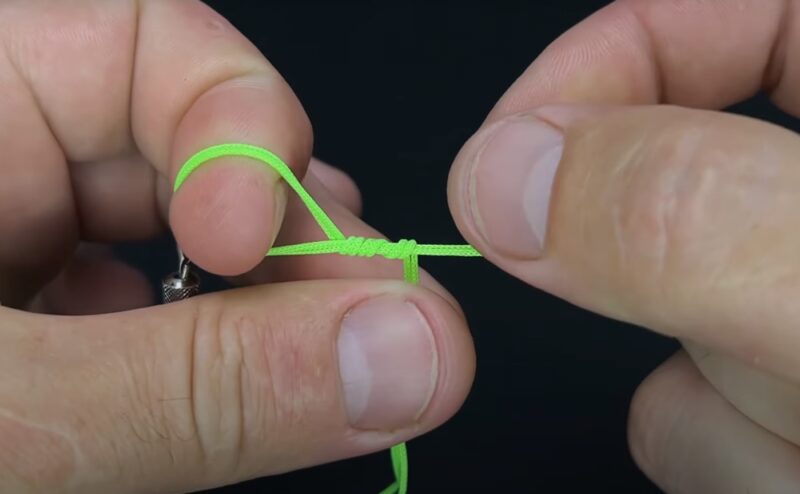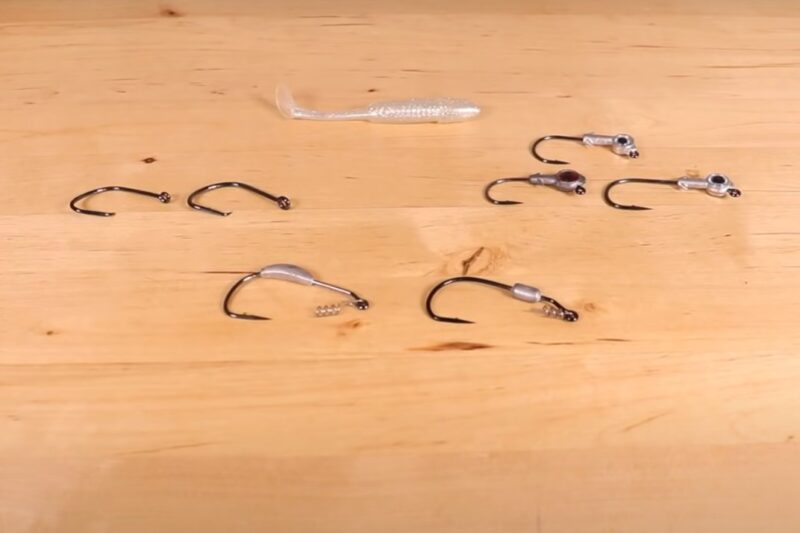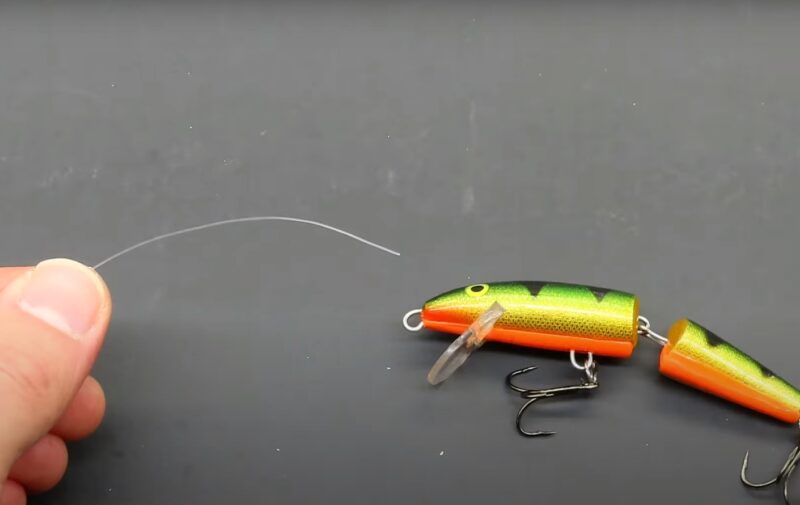If you love fishing, you know that it’s not just about catching fish. It’s also about the thrill of the chase, the beauty of nature, and the satisfaction of a well-executed plan.
But to make the most of your fishing experience, you need to know how to attach your lure to your line the right way.
This is the key to attracting and hooking your target fish. In this post, I will show you how to tie the perfect knot for your lure so you can have fun and fruitful fishing adventures.
Key Takeaways
Why Are Fishing Knots Important?

Securing a fishing line to a hook, lure, or swivel isn’t just about making a knot but about making the right one.
With the ocean or river as your playground, you’re bound to encounter various conditions that demand different approaches.
Each knot comes with its unique strengths and weaknesses, tailored for specific situations.
A well-tied knot ensures that the big one doesn’t get away, making the difference between a triumphant catch and a fish tale about the one that got away.
What Supplies Will You Need?
Before discussing the knots, ensure you have the necessary gear:
- A fishing rod and reel
- The appropriate fishing line for your target fish
- Scissors or a knife for trimming the line
- A bit of patience and willingness to practice
Popular Fishing Knots and Their Uses
Improved Clinch Knot
Ideal for beginners, the Improved Clinch Knot is versatile and can be used in a variety of fishing scenarios.
It’s particularly effective for securing your lure to monofilament or fluorocarbon lines.
Palomar Knot
Famed for its strength and simplicity, the Palomar Knot works wonders with monofilament lines.
It’s easy to tie, even on a boat with the wind blowing.
Uni Knot
The Uni Knot, known for its adaptability, works well with different types of lines.
Whether you’re using mono, fluoro, or braid, the Uni Knot has you covered.
Berkley Braid Knot
Designed specifically for braided lines, the Berkley Braid Knot offers high strength and minimal slippage, ensuring your lure stays securely attached.
How to Tie a Fishing Knot
Let’s break down the steps for tying the Palomar Knot, known for its simplicity and effectiveness:
- Double Your Line: Make a loop by doubling back on your line.
- Thread the Loop: Pass the loop through the eye of the lure or hook.
- Tie a Simple Knot: Make a simple overhand knot with the loop above the eye of the lure.
- Encase the Lure: Pull the loop down and pass it completely over the lure.
- Tighten: Wet the line slightly (saliva works great) and pull both ends to tighten the knot snugly against the eye.
Practice Makes Perfect
The key to mastering fishing knots is practice. Start with easier knots like the Clinch or Palomar and gradually work your way up to more complex ones.
Use different types of lines to familiarize yourself with how each behaves. Remember, muscle memory is your friend, and the more you tie, the easier it becomes.
Troubleshooting Common Knot Issues
Encountering problems is part of learning. If your knots are slipping or breaking:
- Check if you’re using the right knot for your line type.
- Lubricate the line to prevent friction damage when tightening.
- Ensure all turns are neatly stacked before tightening.
Keeping Your Hooks in Top Shape

Maintaining your hooks is just as important as tying them properly. Avoid fishing in areas with lots of snags, and regularly inspect your hooks for signs of wear or damage.
Sharp, well-maintained hooks improve your chances of a successful catch.
When Should You Use Specific Knots?
The San Diego Jam Knot
When using fluorocarbon lines, the San Diego Jam Knot is recommended for its exceptional strength and ease of tying.
This knot is particularly useful for anglers targeting strong, hard-pulling fish.
FG Knot
For those looking to connect a braided line to a fluorocarbon leader, the FG Knot is a top choice.
It retains a high degree of the line’s inherent strength while ensuring a smooth transition from braid to leader.
Double Uni Knot
As an alternative to the FG Knot, the Double Uni Knot offers a simpler method for connecting braid to fluorocarbon. It’s easier to tie and sufficiently strong for most fishing conditions, though it may not be as streamlined.
Snell Knot
The Snell Knot is particularly effective for flipping techniques, as it ensures the hook is perfectly aligned for a direct pull, maximizing hook-up percentages.
This knot is a favorite among bass anglers.
Rapala Knot
To give your lure more freedom to move, the Rapala Knot creates a non-restrictive loop at the lure’s attachment point.
This knot is great for fishing with minnow-like lures or whenever you want to enhance the action of your bait.
Arbor Knot
The Arbor Knot is used to attach your fishing line to the reel spool securely. While simple, it’s a crucial knot that prevents your line from slipping under tension.
Tools That Can Help
While learning to tie knots by hand is invaluable, various tools can make the process easier, especially for beginners or those with dexterity challenges.
Knot tying tools can help you create perfect knots every time but remember, they’re not a substitute for learning the skill itself.
Practice Tips and Techniques
To become proficient in tying fishing knots:
- Start with Larger Materials: Begin practicing with a thicker rope or cord and a large hook or eyelet. This makes understanding the knot’s structure easier.
- Progress to Actual Fishing Line: Once comfortable, move on to using the fishing line and tackle you’ll be using on the water.
- Use Visual Aids: Step-by-step guides, videos, and tutorials can be invaluable resources for learning and mastering new knots.
- Consistent Practice: Regular practice, even during the off-season or at home, ensures your skills remain sharp.
FAQs
Can I use the same knot for both freshwater and saltwater fishing?
Yes, most knots can be used in both freshwater and saltwater environments, but consider the type of line and species of fish when choosing your knot.
How often should I replace my fishing line to ensure knot strength?
Replace your fishing line at least once a season or whenever you notice wear, fraying, or memory curls that could weaken knots.
Is there a quick test to check the strength of my fishing knot?
Perform a pull test by gently tugging on both ends of the line. If the knot holds without slipping or breaking, it’s likely strong enough for use.
Should I use a different knot if I’m teaching a child how to tie a fishing lure?
Starting with a simple and easy-to-tie knot like the Palomar Knot is advisable when teaching children, as it builds confidence and foundational skills.
Do weather conditions affect the type of knot I should use?
Weather conditions primarily affect line flexibility and handling. Cold weather can make lines stiffer, so use knots that are easy to tie under these conditions.
Can I use lubrication other than saliva for tying knots?
Yes, water or a silicone-based lubricant can also be used to reduce friction and protect the line when tightening a knot.
Final Thoughts
Learning to tie a fishing knot is an essential skill for any angler. It’s the linchpin that holds your fishing setup together.
With a variety of knots tailored for different situations and line types, finding the right one for your needs can dramatically improve your fishing success.
Practice regularly, be patient with yourself, and soon, you’ll tie knots with confidence and ease, ready for whatever the water throws your way.

